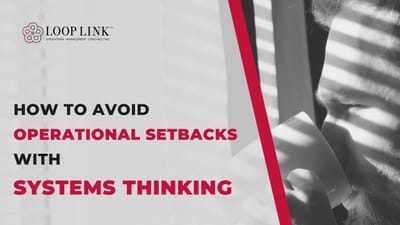Adapting to Change VS Leading Change: What CEOs Need To Know

If 2020 has forced us to embrace anything, it's change.
COVID-19 caught us all off guard, leaving us no choice but to improvise and do our best from moment-to-moment— and there's no shame in that.
After all, flexibility and resourcefulness are among the most essential principles of entrepreneurship.
But as creative CEOs and agency owners, we must stop at some point and ask ourselves one critical question:
"Am I being proactive or reactive in my approach to change?"
This is question I want you to consider today.
Adapting to Change VS Leading Change: What's the Difference?
During times of uncertainty, we often praise the ability to adapt to change. One quick Google search will turn up a never-ending list of tips and strategies for adapting to change. But it adapting really the ultimate goal?
Here's the thing— adapting is a reaction. It is a response that is subsequent to a prior event or action.
Leading change, on the other hand, is proactive. It is the act of anticipating change and laying the groundwork today so that we may thrive tomorrow.
Why Change Leadership is Important
The impact of change leadership is far-reaching.
Below are some of the advantages of being a change leader:
- Team Unity
Your ability to overcome turbulent times is reliant upon team performance. The more your team operates in harmony, the more resilient they will be when challenges arise. By setting an strong example of poise, determination, and self-command during COVID-19, you'll empower your team members to match your standards and personal conduct. Additionally, as you work to create an environment where employees feel supported, heard, and engaged, you'll notice your team will have a deeper connection to their work and an increased motivation to contribute to company success. - Agility
A key indicator of successful change management is the amount of time it takes you and your team to address and overcome an unexpected event. When you take a proactive, forward-thinking approach to change, you can put processes, systems, and structures in place— making it easier to absorb the impact of curve balls down the line. Remember, it is not the strong who survive, but those who are most adaptable to change. Thus, preparing in advance for future adversity is the absolute best strategy for increasing agility and the likelihood of success. - Sustainability
If you've been reading my content for awhile, you'll know how strongly I feel about sustainability in business. I highly encourage checking out my previous blog, Why Sustainability Matters More Than Growth, to better understand the importance of continuous improvement that doesn't put your future efficiency at risk.
Leading change is the only way to maintain any amount of control over how surprise events impact your business. When we rely solely on adapting to change, we do not equip ourselves with the tools, tactics, or resources required to take charge of unforeseen problems in the future— leaving us vulnerable to hardship.
Tips for Leading Through Change
To successfully navigate challenging times, we must maintain the right CEO mindset.
These tips can help you progress with the big picture in mind.
- Put Your Purpose First
When leading change, the purpose of your business should serve as your guiding north star. Take the time to clearly define what you want to accomplish and how you want your clients to benefit in the coming weeks and months. Then share this greater purpose with your team members and engage them in the planning process. Every employee (or contractor) will play a vital role in fulfilling this greater purpose— make sure they understand your vision so they can bring it to life. - Operate in Order of Priority
It is impossible to tackle every issue while leading through change. Your routines, processes, and schedules will all be challenged in ways you haven't experienced before. Thus, you'll need to implement a ranking system and address concerns in order of urgency and consequence.
Again, clear communication with your team will make all the difference here. Provide your employees with your ranking system and exact instructions to follow should they be unsure how to proceed on a specific task. - Acknowledge Performance Achievements
You can have a seemingly fool-proof change leadership plan, but if you fail to acknowledge the extra effort your team members are putting in to make that plan possible, they'll quickly lose steam and you'll be left holding the bag.
I can not stress enough how integral celebrating achievements is for change management success.
Pay for coffee when employees stay late or work extra hours. Send a thoughtful, personal email and praise the recipient for a job well done. Host a team meeting where the sole purpose of the gathering is to share accomplishments and boost team morale.
Change is hard. Let your team members know you understand and you value what they're bringing to the table.
Now that we've discussed the difference between adapting to change VS leading change, how will YOU make the shift from reactive to proactive?







Member discussion